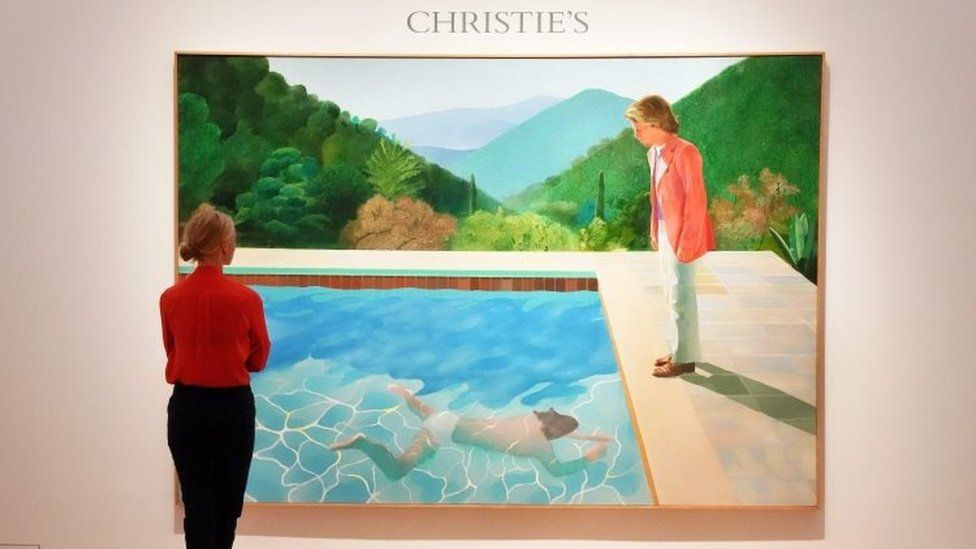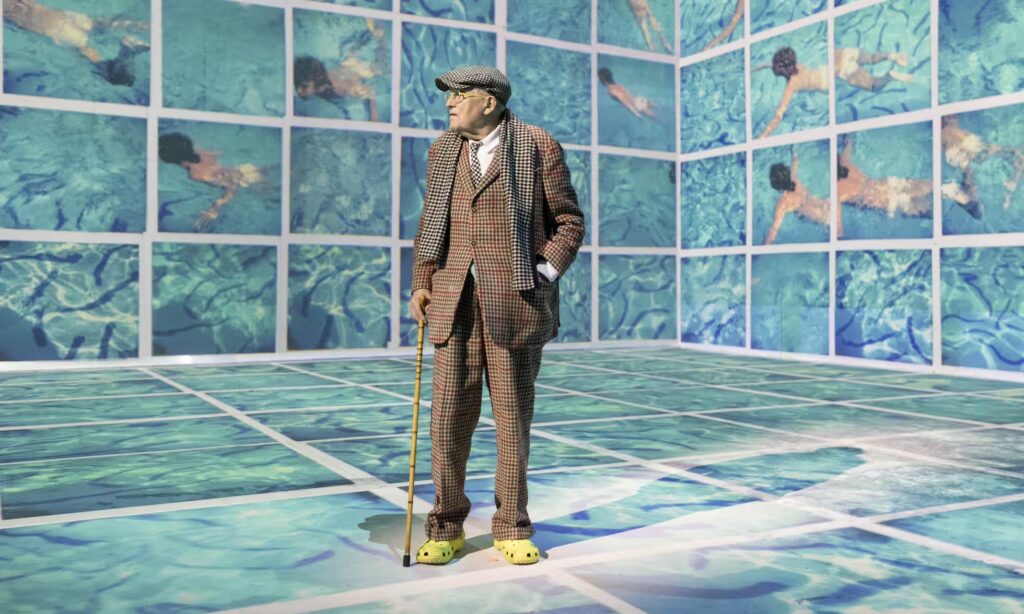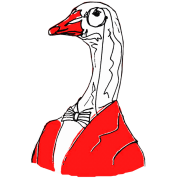By Lizzie Walsh
‘An overwhelming blast of passionless kitsch’ reads the Guardian’s reckoning of David Hockney’s 2023 ‘Bigger & Closer (not smaller and further away)’, from an unfavourable review published last February. For the inaugural show at the Lightroom exhibition space at Kings Cross, Hockney was a big catch and exhibited for an extended period after great success from the initial running period, rounding up to eleven months at the venue. It goes on to say, rather damningly, that ‘unfortunately the kitsch is not just a twinkle but an overwhelming crescendo’; that the hour long ‘immersive’ exhibition joins all other immersive shows in the ‘passionless dustbin of forgetting.’
While this may have been the case for that certain reviewer, I remember the show from last March as a delightful dive into the artist’s process, as a welcome crescendo that placed the traditional gallery purveyor as witness to the process on the artist’s dimension (not the dustbin). Particularly striking about the show, which stays with me, was the play upon (or rather upheaval of) human visual perspective. The exhibition was split into six sections or chapters of looping on repeat, illustrating the joyful relation the artist has with the natural world and technology. His desire to share his art with the world- the way he sees things- was palpable in his voice recordings from different points in his life that run over Nico Muhly’s contemporary score. While it was critiqued by some as occupying a strange space in the immersive world, with most shows of that nature being when the artist is dead, such as the recent retrospectives for Gustav Klimt and Van Gogh, the magic of this event was the artist’s sheer attentiveness to time, space, and photographic placing- he seems to draw with a camera. After all, if we can have retrospective immersions, why not prospective? Hockney reveals what is probable and possible for people who make pictures.
His lesson on perspective sets us up for a very precise placing of his pictures and reflection upon his own life’s works, his meticulous need to create and expand. Taking us on a brief tour of the camera obscura and the advent of photography, he observes how ‘we see psychologically but cameras see geometrically.’ By layering his pictures in a cubist style, as for example in Chair, Jardin du Luxembourg (1985), we might become, in a sense, closer to the realities of space, despite it being a digital show. Indeed, Hockney elaborates that ‘by putting more in, you get more reality, I think.’ The experience is ebulliently experimental, even including some of the artist’s works for operas from the 1980s – a welcome midway juncture from his landscapes, pool paintings and iPad creations. This is the man whose Portrait of an Artist (Pool with Two Figures) sold for 90.3 million in 2018, becoming one of the most expensive paintings sold at auction by a living artist.

However, critics went on to say, as in Time out, who described their experience as: ‘looking for the art in it is like looking for the music in a bacon sandwich’. A sizzling and crisp critique that lacks in the imagination department, a stifling remark that suggests complete disaffection from either sandwich or show. Here the clue is in the title ‘Bigger and Closer (not smaller and further away)’ it is a collection of pieces that form a moving loop of art that is primarily about the practice of looking and the interpretation of getting closer to that sensory game rather than looking at art in the traditional sense of the gallery goer. Instead, the observer is within Hockney’s shifting artscapes, as his hands turn the concertina pages of East Yorkshire scenes, vast tracts of trees and drawn-out fields. Pathways light the floor, meandering onto the walls of the Lightroom as the music rises in vivacity.
The virtual installation such as The Wagner Drive (San Gabriel Mountains 2012), is itself a beautiful story of climbing, vertiginous views. In the recording over this piece, which projects onto the ‘cavernous sort of gigantic warehouse type room,’ (Rich Roll) just off Coal Drops Yard in London, Hockney speaks to his audience recounting listening to Wagner again and again on the road that winds through the San Gabriel Mountains. Conducting his ekphrasis, the stereo music and the pixels to be choreographed with the car just reaching the top of the mountains. And yet, my mum recalls feeling travel sick during this particular segment of the show. All perspectives are subjective.
“I don’t care what critics say about me,” Hockney says in one interview. “I think it’s really good.”




